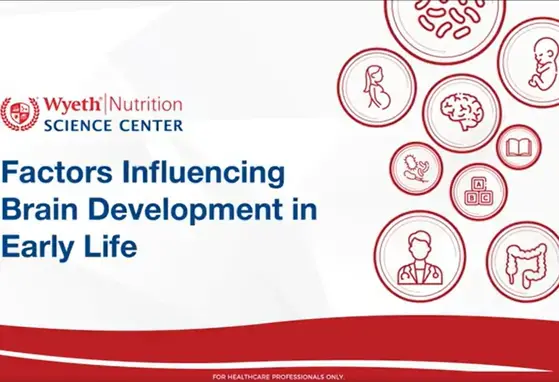[Hot Science] Optimizing Bone Health in Children and Adolescents
![[Hot Science] Optimizing Bone Health in Children and Adolescents](/sites/default/files/styles/header_image_article_mobile/public/2019-11/image%287%29.jpg.webp?itok=ihVvQDf0)
A clinical report on optimizing bone health in children and adolescents.
Background
- This clinical report from American Academy of Pediatrics (endorsed by American Bone Health) reviewed normal bone acquisition and discussed factors affecting bone health in infants, children, and adolescents.
- Osteoporosis is a major cause of morbidity and economic burden worldwide, and is not considered to have its roots in childhood.
- Pediatrician plays a major role in helping optimizing bone health in the pediatric age group when the antecedents of osteoporosis are established.
- Osteoporosis can be evitable by preventative measures in three levels:
1. Primary prevention by optimizing bone health in healthy children since ~90% of peak bone mass has been accrued at age 18
2. Secondary prevention by assessing the population at risk for increased bone fragility
3. Tertiary prevention by specific treatment to increase bone mass in populations at increased risk of fracture
Preventive Measures in Three Different Levels
1) Primary Prevention
Optimize bone health in healthy children via modifiable determinants such as nutritional intake, exercise and
lifestyle, and body weight.
A) Nutritional intake:
Calcium
Table 1 – Dietary recommendations of calcium in US
| Calcium | RDA# (mg/day) | UL# (mg/day) | Dietary source |
|---|---|---|---|
| 0 - 6 months (Healthy term infant) |
(AI# reference) 200 | 1,000 | Human milk or infant formula if human milk is not available |
| 6 - 12 months (Healthy term infant) | (AI# reference) 260 | 1,500 | |
| 1 – 3 years old | 700 | 2,500 |
|
| 4 – 8 years old | 1,000 | 2,500 | |
| 9 – 18 years old | 1,300 | 3,000 |
For most children and adolescents, emphasis should be made on healthy dietary behaviors with calcium intake at or near the recommended levels throughout the life stages. Calcium supplementation is unlikely to reduce the fracture risk significantly.
Vitamin D
Table 2 – Dietary recommendations of vitamin D in US
| Vitamin D | RDA# (IU/day) | UL# (IU/day) | Dietary source |
|---|---|---|---|
| 0 - 6 months (Healthy term infant) | (AI# reference) 400 | 1000 | Human milk or infant formula if human milk is not available |
| 6 - 12 months (Healthy term infant) | 1500 | ||
| 1 – 3 years old | 600 | 2500 |
|
| 4 – 8 years old | 3000 | ||
| 9 – 18 years old | 4000 |
- Encourage an active intake of vitamin D
- By an exposure of arms and legs to sunlight^ for 5 – 15 minutes, 2 to 3 times a week - Severe vitamin D deficiency is associated with reduced bone mass in adolescents.
- Assessment of vitamin D status can be done by measuring the serum 25-OH-D concentration, which reflects both the endogenous and dietary intake of vitamin D.
- The present AAP report advises screening of vitamin D deficiency only in children and adolescents with conditions associated with reduced bone mass and/or recurrent low-impact fractures.
- Children with lactose intolerance may benefit from lactose-reduced or lactose-free milks and cheeses or lactose enzyme.
- Avoid soda consumption since it will lower the intake of milk and calcium.
- Diets low in protein or high in sodium reduce calcium retention and should be avoided.
B) Exercise and lifestyle:
- Encourage high-impact, low-frequency activities
- Jumping, skipping, and hopping for 10 minutes 3 times a week;
C) Body weight in children and adolescents
- Encourage to maintain a normal BMI
- BMI and lean body mass are associated with BMD;
- Increase adiposity can also be associated with increased fracture risk
2) Secondary Prevention
Assess the population at risk for increased bone fragility
- Screen for factors+ associated with reduced bone mass such as some endocrine conditions, or taking certain medications.
- Apply dual-energy x-ray absorptiometry (DXA) to assess bone mass – a preferred method because of its availability, speed, precision, and low dose of radiation.
+ Factors associated with reduced bone mass
- Genetic conditions
- Chronic illness
- Eating disorders
- Endocrine conditions
- Medications
3) Tertiary Prevention
Specific treatment to increase bone mass in populations at increased risk of fracture
Treatment of underlying conditions in most chronic diseases associated with low BMD may improve bone mass.
- Calcium supplementation for those unable to consume enough from dietary source.
- Vitamin D2 or vitamin D3 supplements for population with vitamin D deficiency.
- Use of bisphosphonates should be restricted to children and adolescents with osteogenesis imperfecta and conditions associated with recurrent fractures, sever pain, or vertebral collapse.
The Role of The Pediatrician
- Understand dietary calcium and vitamin D intake, use of calcium and vitamin D supplementation, soda consumption and exercise at 3 years, 9 years and during the yearly adolescent health maintenance visits.
- Encourage higher dietary intake of foods and beverages containing calcium and vitamin D.
- Encourage weight-bearing activities, e.g. walking, jumping, skipping, running and dancing.
- Screen for vitamin D deficiency for the children and adolescents who have conditions associated with reduced bone mass or recurrent low-impact fractures
- Consider a DXA in medical conditions associated with reduced bone mass and increased bone fragility, and in children and adolescents with clinically significant fractures sustained after minimal trauma.
- Discourage preoccupation with extreme thinness in adolescent female subjects.
- Restrict the use of bisphosphonates in children and adolescents to osteogenesis imperfect and conditions associated with recurrent fractures, severe pain, or vertebral collapse.
Remarks
# RDA stands for recommended daily allowance
UL stands for upper limit
AI stands for adequate intake
^ 0.5 minimal erythemal dose, maximum synthesis occurs between the hours of 10:00AM and 3:00PM in the spring,
summer and fall
IMPORTANT NOTICE:
The World Health Organization (WHO*) has recommended that pregnant women and new mothers be informed on the benefits and superiority of breast-feeding – in particular the fact that it provides the best nutrition and protection from illness for babies. Mothers should be given guidance on the preparation for, and maintenance of, lactation, with special emphasis on the importance of a well-balanced diet both during pregnancy and after delivery. Unnecessary introduction of partial formula feeding or other foods and drinks should be discouraged since it will have a negative effect on breast-feeding. Similarly, mothers should be warned of the difficulty of reversing a decision not to breast-feed.
Before advising a mother to use an infant formula, she should be advised of the social and financial implications of her decision: for example, if a baby is exclusively formula-fed, more than 400g per week will be needed, so the family circumstances and costs should be kept in mind. Mothers should be reminded that breast-milk is not only the best, but also the most economical food for babies. If a decision to use an infant formula is taken, it is important to give instructions on correct preparation methods, emphasizing that unboiled water, unsterilized bottles or incorrect dilution can all lead to illness.
*See: International Code of Marketing of Breast Milk Substitutes, adopted by the World Health Assembly in Resolution WHA 34.22, May 1981.
Reference
Neville H. Golden, Steven A. Abrams and COMMITTEE ON NUTRITION. Pediatrics; originally published online September 29, 2014; DOI: 10.1542/peds.2014-2173.
WYE-EM-361-NOV-14
If you liked this post you may also like

Infographic - Can Growing-Up Milk Help Boost the Child's Key Nutrients for Growth and development?

The Learning Lead - Volume 2, 2024: "Can Growing-Up Milk Help Boost The Child’s Key Nutrients for Growth and Development?"

Factors influencing brain development in early life
